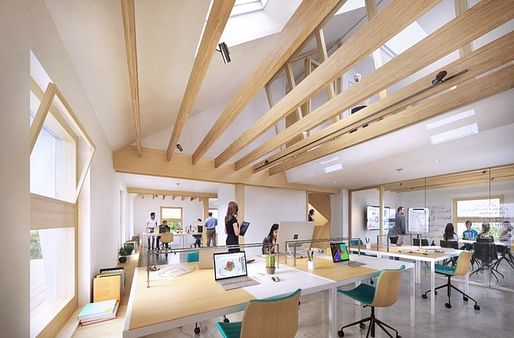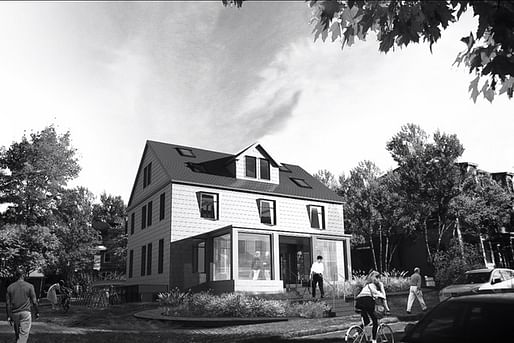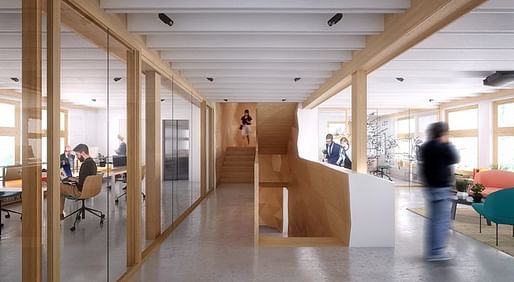

How can you transform a not particularly sustainable 1940s building into a leading example of pioneering environmental design? First, get the Harvard GSD Center for Green Building and Cities team focused on green building techniques, and secondly, hire Snøhetta. The result? This press release from Harvard says it all:

The Harvard Center for Green Buildings (CGBC) at the Harvard University Graduate School of Design, in collaboration with Snøhetta and Skanska Technology, are retrofitting CGBC’s headquarters in a pre-1940s timber-framed building to become one of the world’s most ambitious sustainable buildings. As a first-of-its-kind research project, HouseZero demonstrates how to transform a challenging building stock into a prototype for ultra-efficiency, rapidly reducing the level of reliance on energy-intensive technology while simultaneously creating comfortable indoor environments.

HouseZero attempts to address the global environmental challenge of climate change by focusing on existing buildings, which account for energy inefficiency and carbon emissions on a vast scale worldwide. Through intelligent design that generates inspiring work spaces and a comfortable indoor climate, HouseZero achieves groundbreaking reductions in energy use and carbon footprint.

To realize this ambition, the design of HouseZero is driven by highly ambitious performance targets, including 100% natural ventilation, 100% daylight autonomy, almost zero energy required for heating and cooling, and zero carbon emissions, including embodied energy in materials. Once completed, the building will produce more energy over its lifetime than was used to renovate and operate it. This measure considers the building’s total life-cycle, including the embodied energy for construction materials, building operations and equipment plug-loads over a 60-year lifespan.
"Before now, this level of efficiency could only be achieved in new construction," said Ali Malkawi, professor of architectural technology at the Harvard Graduate School of Design, founding director of the Harvard Center for Green Buildings and Cities and the creator of the HouseZero project. "We want to demonstrate what's possible, show how this can be replicated almost anywhere, and solve one of the world's biggest energy problems--inefficient existing buildings."
5 Comments
contemporary ship of theseus
The drawing shows the sun to be on the opposite side of the house from the glassed-in porch, which will make that space extremely cold in the winter. FWIW
Maybe part of their sustainable design strategy is to relocate the house as a whole to the southern hemisphere during the US winter season.
wow I guess the planet is saved!!
Is that a green roof over the swimming pool?
Block this user
Are you sure you want to block this user and hide all related comments throughout the site?
Archinect
This is your first comment on Archinect. Your comment will be visible once approved.